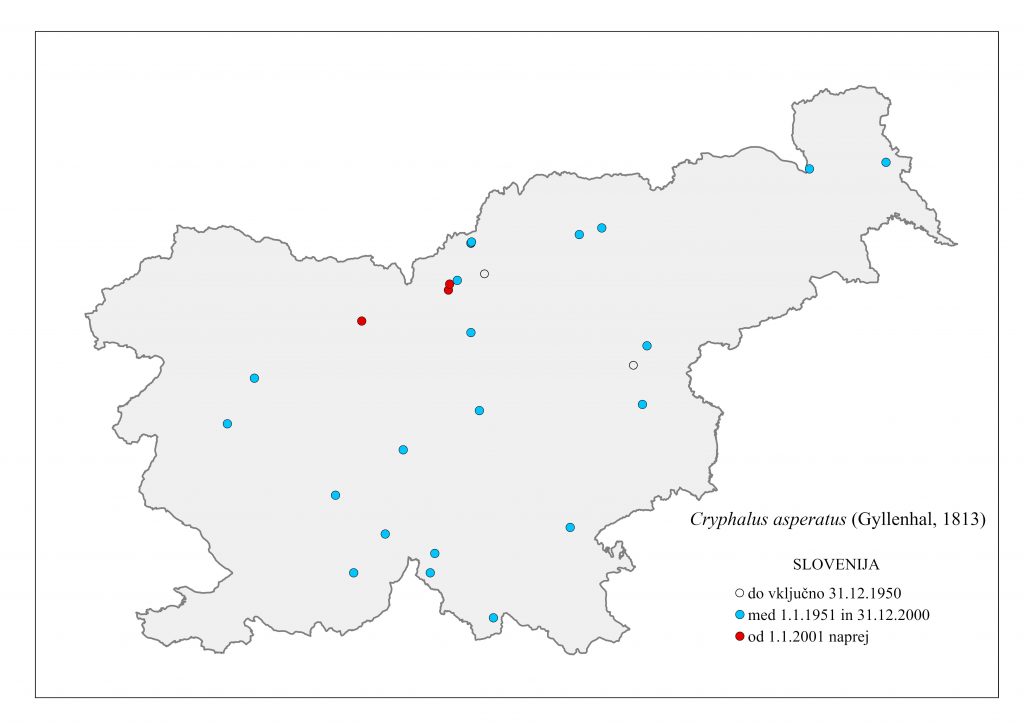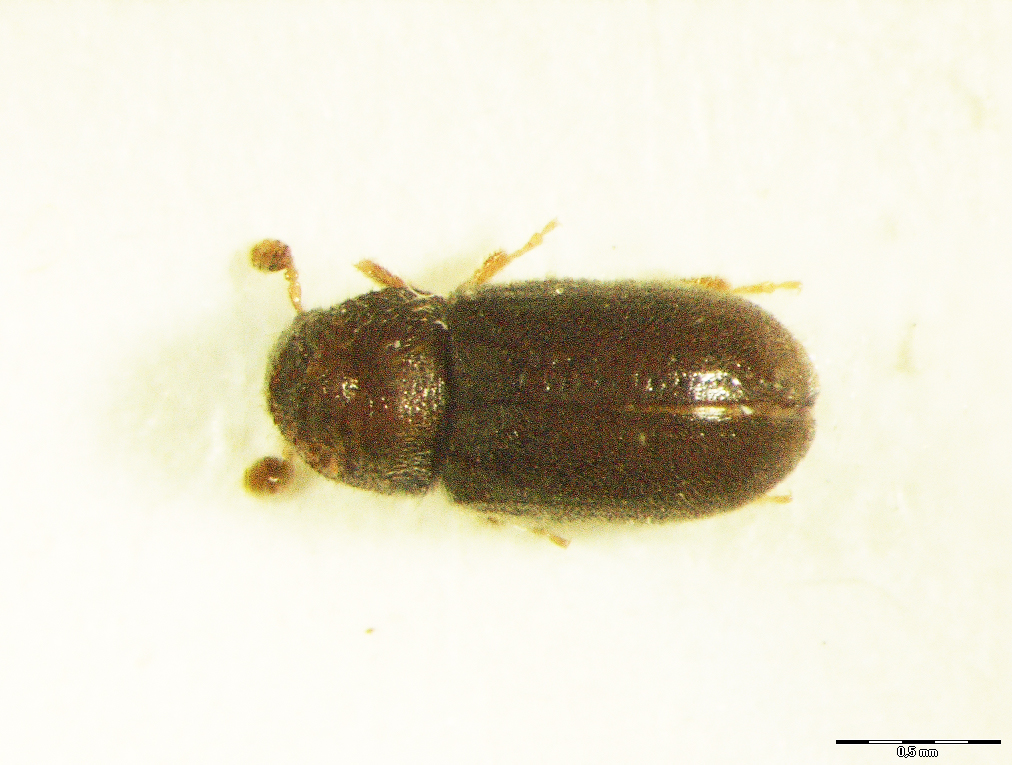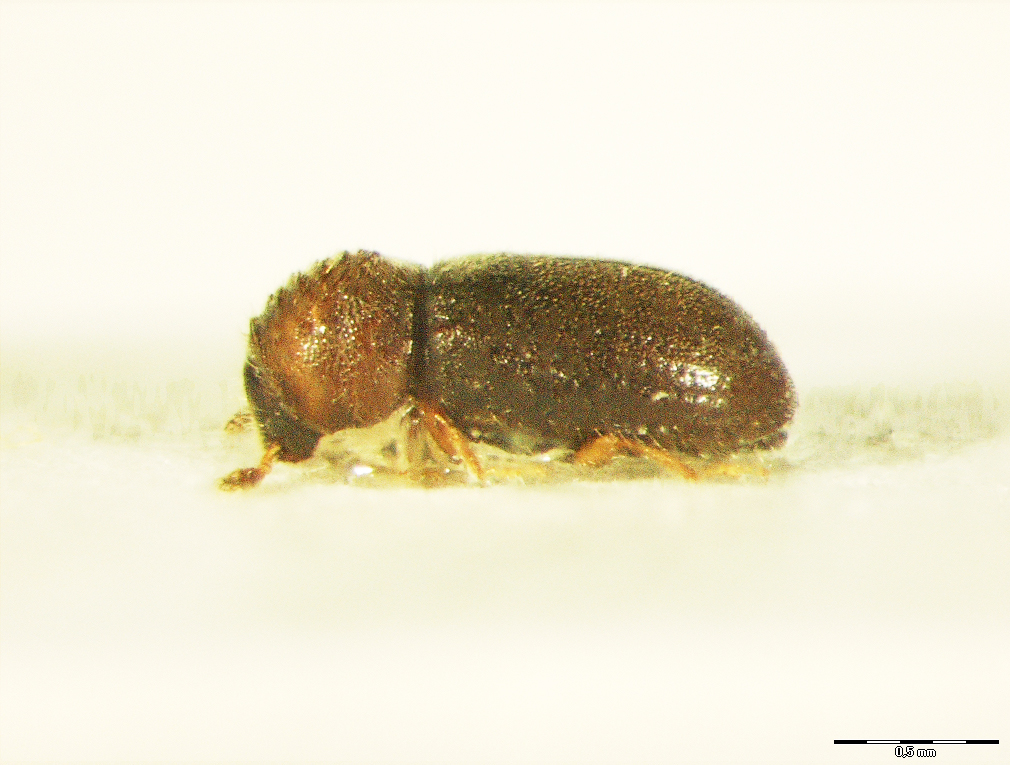19.01. Cryphalus asperatus (Gyllenhal, 1813)
Presence
E: AU BE BH BU BY CT CZ CR DE EN FI FR GB GE GR HU IR IT LA LT LU MC NL NR NT PL RO SK SL SP ST SV SZ YU
N: AG MO
A: ES FE JA NC TR
Figure 76: Cryphalus asperatus, dorsal, lateral (Photo: Maja Jurc)
Older catalogs and keys – citations of name
Siegel, 1866: Cryphalus asperatus Gyll., Cryphalus Abietis Rtzb.; Grüne 1979: Trypophloeus asperatus Gyllenhal, 1813; Freude, Harde, Lohse 1981: Trypophloeus asperatus Gyllenhal; Titovšek 1988: Cryphalus abietis (Ratzeburg); Pfeffer & Knížek 1993: Cryphalus abietis (Ratzeburg, 1837); Pfeffer 1995: Trypophloeus asperatus asperatus (Gyllenhal, 1813).

Figure 77: Cryphalus asperatus, distribution map according to historical and recent data
Ecology and presence in Slovenia
The species is distributed in central and eastern Europe, Scandinavia, the European part of the former Soviet Union, the Caucasus, northern Africa and Asia (Asia Minor, eastern Siberia, eastern Russia). Siegel (1866) states that the species was “rare in Carniola, under spruce and pine bark”. Later records show that the species is present in all Slovene regions except the Slovene part of Istria and Bela Krajina (Figure 77). Hosts include Picea abies, P. omorica, P. obovata, P. orientalis, Pinus sylvestris, P. strobus, Pinus spp., Abies alba, A. bornmülleriana and Abies spp., and less frequently Pseudotsuga menziesii, Chamaecyparis lawsoniana and Larix spp.. In Slovenia the species has been found on A. alba and P. abies, and once also on P. sylvestris. Inhabits older trees. Monogamous species, develops two generations per year, swarms in March and August. Females deposit 25-30 eggs in the inner walls of a rounded flat-shaped excavation, which replaces both the brood chamber and the maternal passages. From the flat-topped excavation, the egg larvae (L1) excavate short tunnels in different directions and enlarge the excavation. Older larvae excavate 1-4 cm (up to 6 cm) long larval tunnels from the pupation chamber which terminate in pupation chambers excavated in the sapwood. At first glance, the tunnel system appears star-shaped, but the arms of the star here are the larval tunnels (not the maternal chamber!), so we call this system a quasi (“false”) star-shaped straight system. This type of straight system can only be confused with those of other Cryphalus sp.. On the anterior part of the neck shield there is a field of coarse, concentrically arranged humps. Adult length is 1.2-1.7 mm (Figure 76).


